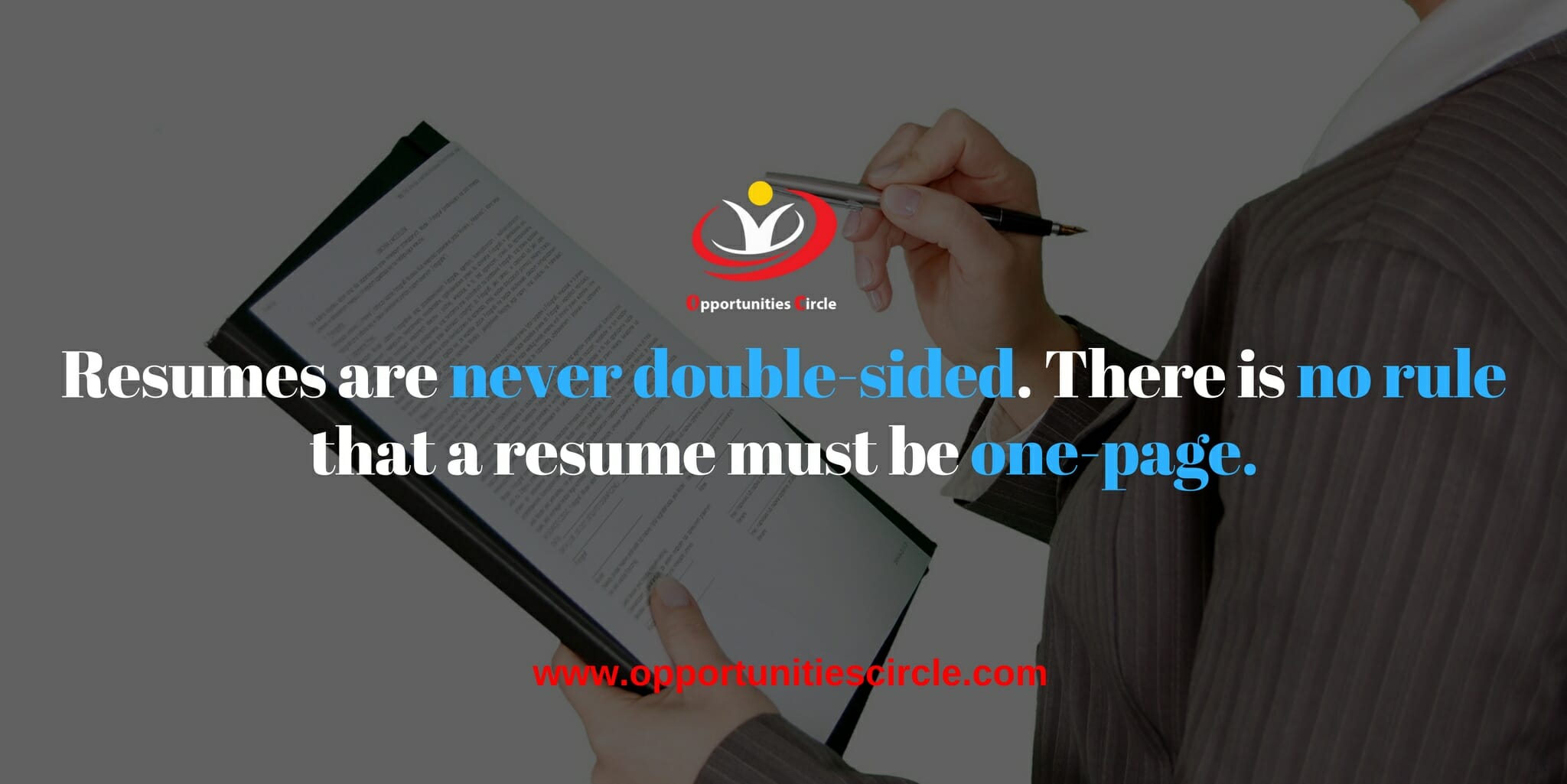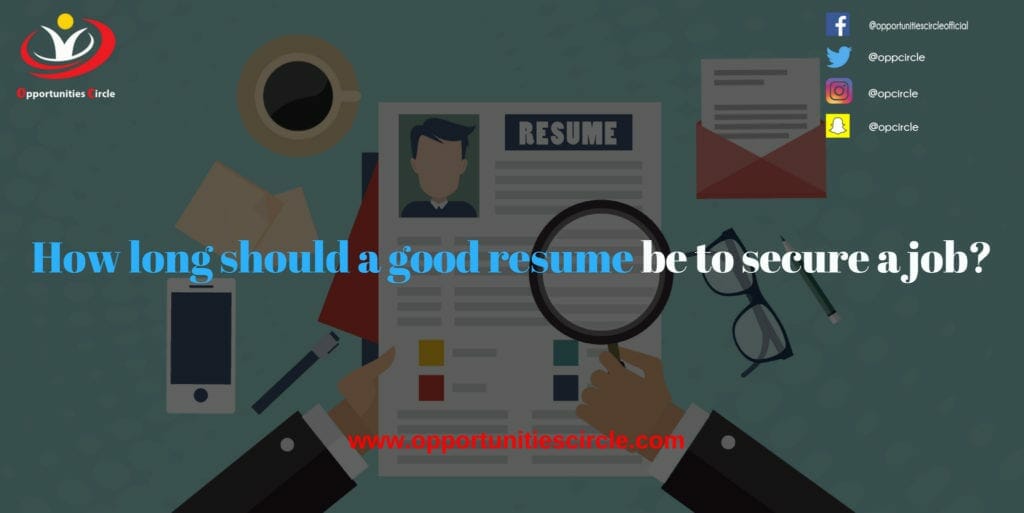How long should a good resume be to secure a job?
One frequently asked question is: How long should a good resume be? Our good resume acts as the first impression. The first impression is the last impression. Most of us are very careful and nervous during our job interviews but quite an impression is already made beforehand-that by our resume. One’s resume holds a significant importance in determining whether or not he/she gets the job or not. The context of a good resume is important and the other very important thing concerning a resume which is often neglected is the presentation of it.
It is important to understand that a Resume and a Curriculum Vitae (CV) are two different things:
A resume is a short summary of your skills where as a CV is a more detailed document. A CV is a detailed drawn out map of your career, education, certifications, achievements and skills. A resume is that summary of your skill set that specifies how you stand out for that particular job. Hence, a resume should be molded according to the requirement of the job.
A good resume is how presentable a resume is; the appropriate amount of information, the graphic representation, the appropriate picture and most importantly, the length of a resume. When an employer takes the first look at the resume he first considers the number of pages he has in hand. Like every other human, if he has to go through a good number of pages, he would want it to be worth his time.
The sole reason why a company asks for a resume and not a CV is to save the time that would be spent going through the detailed sheets of paper. A resume is either a one-page or a two-page document, longer if and only if it fits the requirement of the job and the content is worth the time of your future employer.

One thing to remember is that the one-page resume rule is now dead. There is no hard and fast rule that the resume or the ‘good’ resume must be only one of one page, as it was long believed to be. The purpose of the resume is to show that your skills and capabilities are what the employer is looking for and if that is over one-page, it fulfills the purpose well enough. You should not hesitate in showing off the skills that you worked so hard to master.
Note that a resume is NEVER double sided. This is the worst thing you can do to yourself. It shows how sloppy your work is rather implying your lack of professionalism. As your concern about keeping your resume on fewer pages must suggest you to do so, the goal of securing that job bids you a good-bye. No employer ever is going to flip your resume and find the other side printed amusing. Saving space will only cause harm. The more presentable you want your resume to be, the more you work on the modern rules of designing it effectively.
Most of us prepare well for our interviews but what we always seem to care less about is the document at hand that will be the cause of the first impression and determine whether we even make it to the interview or not.
If you are looking for some amazing internships go to opportunities circle.
Resume page size:
There are no exceptions to the page size of a resume. It is a set rule which has to be followed and cannot be overlooked. The standard size is 8.5 x 11 inches. This standard size is worldwide and no risks should be taken to exhibit ignorance on a core rule. Consider this as part of the eligibility criteria for applying for a job. Neglecting a base rule always appears as one was least bothered to be proper and there is nothing more unprofessional-looking than a lazy, ignorant and uninterested applicant.
Margins are a very important factor in the presentation of a resume. They play a role in the neatness and clarity of the context. The standard margins are 1 to 1½ inch on each side. There are a handful of fonts that are recommended and usually used for good resumes. While using any creative font or any size, the clarity and understanding of the text should not be compromised. Simplicity and neatness are two styles that never go out of the trend and always look professional.

There are four primary types of Resume in terms of their context: chronological, functional, combination and targeted. Each with its different purpose has a different requirement of length.
One-Page resumes:
One page resumes are usually helpful at mid-entry level or entry-level job applications. The one-page should highlight what your skills are and how the fit perfectly for the job. While most people like to resort to one-page resumes and think that they are easier to draft, it is rather a difficult task to make a single page consist of the right and impressive data. Missing out on a skill set or an experience that is significant is a common error that can occur during the process of making a one-page CV. It is very important to design and present this one-page in an effective manner.
Two-Page resumes:
Two page resumes are applicable when you have a good amount of relevant experience and skills that fit the job and make you stand out from the rest of the candidates. Once you set your mind in drafting a two-page resume, have it noted that no irrelevance or extra filling up will be penned.
More than Two-pages:
If your resume HAS to be more than two pages then that must be for a high post job or a very experienced career level. In this case it would not be advisable to consider the amount of pages rather it would have to be focused on drafting the timeline of your career efficiently enough to be marked as a good resume. For entry level or mid-level careers, this is strictly not advised.
Appropriate lengths amount to good resumes. Whenever you are in the need of drafting a resume, always do your homework on the requirement of the job. This effort will result in the best results and help you get that dream job.
Are you in search of internships and jobs? Visit www.opportunitiescircle.com






















